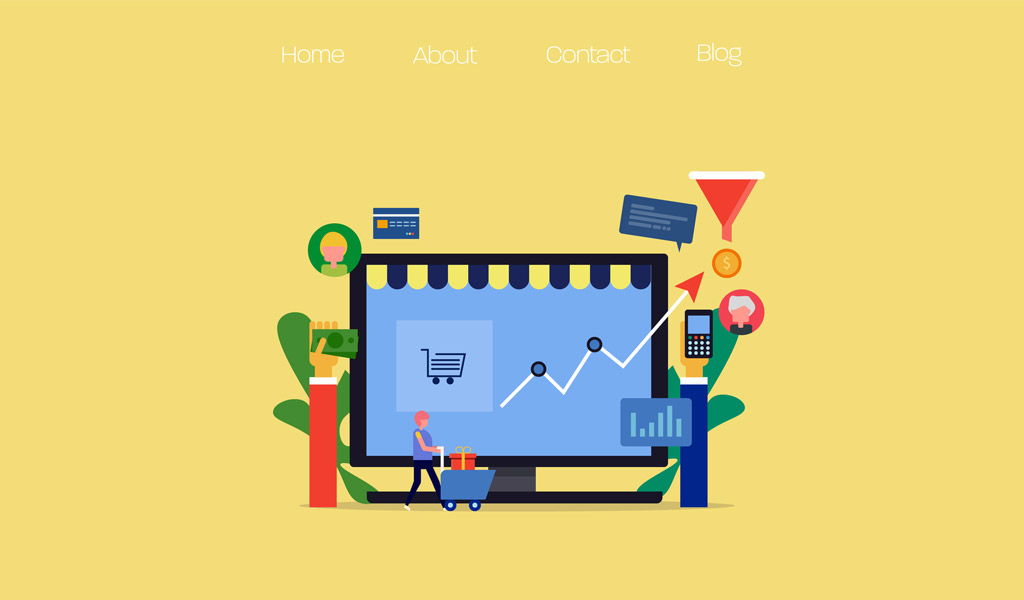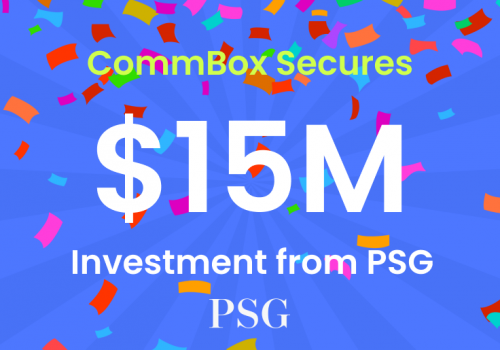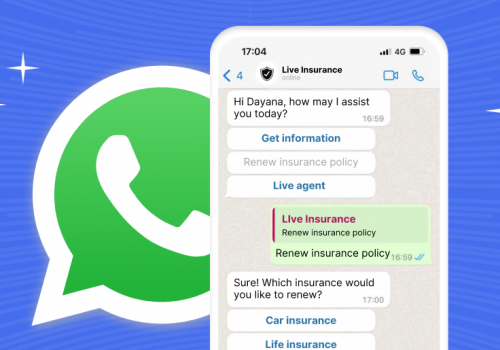Customer Growth for SaaS B2B. A recent B2B market survey found that a whopping two-thirds of businesses are making customer experience a top priority in the next 12 months. Why? Today, merely getting customers through the door is no longer enough. B2B companies are increasingly focusing on customer success to boost revenues, improve customer retention, and acquire better customers. Today we’re going to look at the top metrics that all B2B SaaS companies should be tracking, why, and some tips to get you started. Let’s take a look.
What is Customer Success?
Put simply, customer success is when your customers achieve their desired outcome through interacting with your company. While in the past, companies would only focus on one element of interaction (the product); today, companies are focusing on the whole experience (the brand). This shift comes with a multitude of benefits, including:
- Increasing revenues by 40%
- Achieving 50% faster growth
- Boosted levels of customer satisfaction.
- Increasing the number of brand “evangelicals” your company has. These customers will promote your brand heavily to others in the community.
- Improving customer retention. Remember, customer acquisition costs at least five times as much as retention.
6 Strategies for Increasing Customer Growth Through Customer Success
1. Selling to the Right People
Sales staff need to steer away from selling to bad-fit customers. No matter how great you think your SaaS software is, it simply won’t meet the needs of all customers. So, how do you determine who is a good fit for your software?
- Look at the demographics – Which customer segments buy your product the most?
- Look at usage – What features are the most used in your software?
- What sets your software apart from your competitors? Can potential customers fill a need by using your product that they can’t solve elsewhere?
- What do your most loyal customers love about your product? You should conduct surveys to get to the bottom of this.
By analyzing your customers, you can come up with profiles for ideal good-fit customers, as well as a standard for what a bad-fit customer looks like. You can use the criteria above when establishing your good-fit customers, but what about bad-fit customers? Analyze the customers who stop using your service, particularly those who only use your software for a short period before quitting their subscription.
Incentives and performance quotas drive salespeople to make decisions, so if you want to change the way your salespeople behave, you have to start here. Change your incentive plans to be more customer success focused. Instead of giving compensation based on how many customers they sign up, you can instead switch to a Customer Lifetime Value (CLTV) plan. This way, sales staff are incentivized to find the potential customers who most benefit from your service.
2. Marketing
Much like the sales team, the marketing team should be focused on targeting the right customers. The marketing team should work in conjunction with the sales team to develop buyer personas and ideal customer profiles. It’s then the job of the marketing team to come up with engaging content.
The content needs to be tailored towards the good-fit potential customers, but also follow the latest marketing trends. For example, companies with blogs typically get 67% more leads than those who don’t have blogs. So, blogs are a great place to start, but what do you blog about? Let’s look at an example.
This fictional B2B SaaS company has identified three fundamental personas: the daily user, the manager, and the executive/check signer. Each persona has different priorities:
- The daily user: Daily users want software that is easy to use, can save time and increases their work efficiency.
- The manager: This persona wants to measure progress, make reports, and be able to provide updates to their higher-ups.
- The check signer: This persona wants to know how the software will provide insights for decision making, and most importantly, whether it will generate a decent return on investment.
Successful B2B SaaS companies target all three personas in their marketing content. Why? Because while it may seem intuitive that you only have to target the check-signer (the person who has the final say), in reality, people don’t work like that. Businesses are made up of people, and people are influenced by other people. If you can convince the daily user that your software will provide a marked improvement to their workday, they will persuade their managers for you. The managers then convince the check-signers. Ideally, you want to make content that will answer the common questions, concerns and address every persona’s needs.

3. Support Teams
Your support teams have the most contact with your customers, so they must be customer success focused. If we think back to the definition of customer success – for customers to achieve their desired outcome with your brand – we can start to develop a strategy for mixing customer service with customer success. Here are some tips:
Knowledgebases
Have an easy to use, well organized, and an extensive knowledgebase. If your customer desires to find out how to use a specific feature in your software through your knowledge base, then they should be able to find what they’re looking for. If they have to contact customer support because they can’t find an answer, then you’ve failed. The support teams should play a key role in creating knowledgebases because they know the common issues your customers face.
Being Proactive
If you notice something is wrong, don’t wait for customers to come to you and start complaining. The customer support team can send out an email or notification to let customers know if a feature isn’t working as intended. Additionally, it’s just as important to send a follow-up email when the issue has been fixed. This serves two purposes. Firstly, it ket’s your customers know that you’re always thinking of them and value their business. Secondly, it demonstrates that you are committed to providing excellent service, both in terms of customer service and technology.
4. Engaging the Product Team and Breaking Down Silos
One study found that an alarmingly 70% of product managers spend very little or no time with customers. Instead, they solely rely on information fed to them by other teams. While this strategy can work, if you want to boost your success, your product managers need to spend more time with customers. They need to understand firsthand how customers think and feel about the product. They also need to know how the product is being used – some companies find that their software is being used for activities different from what they intended. If this is the case, then it presents an opportunity to change your marketing to attract more customers in that segment.
Breaking down the silos between teams is another key element of success. What teams do the product managers get data from? Is it just the customer support teams? What about marketing and sales? What about the tech support teams? The more collaboration and communications between teams, the better products you create.
5. Customer Onboarding
Customer onboarding can make or break the customer’s experiences. Onboarding is your first opportunity to demonstrate that the things the sales and marketing teams were saying are true – that your software really can fix their issues. However, for you to prove your value, customers need to understand how to use the product. Here are some tips on how to create a great onboarding process:
Decide How Long It Needs to Be
Contrary to popular belief, there’s nothing long with a long, or even very long, onboarding process. Remember, the key thing you want to deliver is immediate value – you want your customers to see the value in your software right away. If you need a lengthy onboarding process in order to do this, then that’s fine. Above all, customers want to be productive, and they can’t be productive if they can’t get to grips with your product.
Reducing Friction
Are there any parts of your onboarding process that have friction? For example, customers may think a particular step is too complex, or there’s too much to choose from, or it’s too time-consuming. You can get around this by introducing variety into the onboarding process. Don’t rely too heavily on any one element, like text or images. Instead, use a variety of text, images, carousel cards, videos, tip cards, and so on. Variety keeps people engaged in the process and will stop them from switching off or coming back to the onboarding later.
6. Utilizing Feedback
Feedback is your friend! Through feedback, you learn what makes your customers tick and what makes your product great in their eyes. You might think that a specific feature in your software is excellent, but your customers might feel differently. You might think you have a highly competitive feature that no other company offers, but your customers might never use it, and therefore it’s not a great selling point. These are just some of the things you can learn through customer feedback. Here are some tips on how to get useful feedback:
- Surveys: Design comprehensive surveys as well as short surveys that you can send to customers. Some customers will be willing to sit through a long survey, and others won’t – so make both.
- Talking to customer service teams
- Customer interviews or review meetings.

Metrics all B2B SaaS Companies Should Care About
Customer Lifetime Value
This is the average amount of money that your customers pay while engaging with your company. It’s an excellent portrayal of both customer growth and customer success.
To find your CLTV, follow these steps:
- Your customer lifetime rate: This is 1/your monthly churn rate. For example, if your churn rate is 2%, then the equation would be 1/0.02 = 50.
- Find your average revenue per account (ARPA): Divide total revenue by the number of customers. For example, if the total revenue is $100,000 and you have 50 customers, then your ARPA is $2000.
- Multiply the two results together: 50 x $2000 = $100,000.
Customer Churn
You need to know how many customers are leaving your business and why. Whether you measure churn annually, monthly, or quarterly, it’s essential to dig into the data and find out who these customers are – what personas do they fit into? Can you see a pattern?
Revenue Churn
Revenue churn can differ from customer churn if customers are on different price plans. By analyzing revenue churn, you can see if there are any roadblocks to your customer growth. For example, whether customers on specific packages are more likely to churn than those on other packages.
Customer Acquisition Cost
Customer acquisition costs more than customer retention, so you should always be mindful of how much it costs to acquire a new customer vs. how much it costs to retain that customer.
Customer Engagement Score
This will tell you how engaged your customers are and how likely they are to churn. For example, you can measure how often your customers use your product, how often they log into their account, which features they use, and so on. If you find that some customers are using only one or two features of your software, this can mean that they aren’t getting everything they need from it, and they might choose a different option that can address all of their needs in the future.




















